 |
OKAMURA GALLERY
|
 |
OKAMURA GALLERY
|
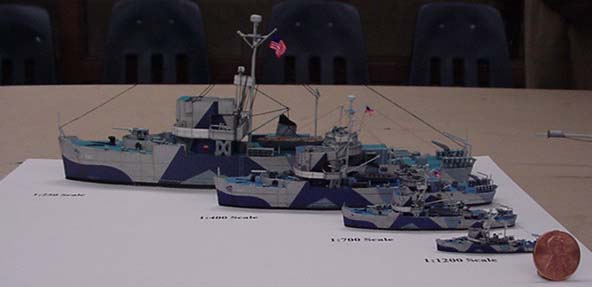 :
The larger replica of the USS Caravan is a 1:250 paper model
created by Roman Detyna of Digital Navy, and is available FREE at
www.digitalnavy.com. :
The larger replica of the USS Caravan is a 1:250 paper model
created by Roman Detyna of Digital Navy, and is available FREE at
www.digitalnavy.com. |
USS Caravan, an Admirable class minesweeper, was launched on October 27, 1942 at Portland, Oregon. She was commissioned on January 21, 1944 and participated in the Pacific Theater, mainly operating in the Marianas. She arrived back at Portland in May 1945 for overhaul, and sailed to Cold Bay, Alaska in July 1945 to train a Russian crew. On August 16, 1945, USS Caravan was decommissioned and transferred to the Soviet Union under Lend-Lease. Renamed the T. 597, the ex-Caravan served until 1954, when she was certified unseaworthy. She was probably scrapped shortly thereafter. |
|
|
|
 |
Also known as the H. L. Hunley, this Confederate submarine is credited as the first to sink a surface warship. On the night of February 17, 1864, the hand-cranked Hunley rammed a spar torpedo into the USS Housatonic. The resulting blast sent the Union ship to the bottom of Charleston Harbor, but the Hunley never returned from her historic mission. The final fate of the Hunley remained a mystery until novelist Clive Cussler discovered the wreck in May of 1995. An operation to salvage and preserve the Hunley for eventual public exhibition in a Charleston museum is underway, under the auspices of the United States Navy and the State of South Carolina. The organization Friends of the Hunley (www.hunley.org) plans to raise the submarine sometime in 2000 or 2001. |
|
|
|
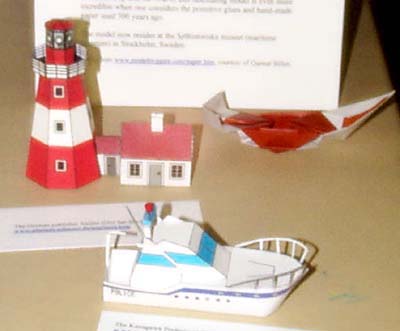 |
Origami, the Japanese art of paper-folding, is well-represented on the Internet, with hundreds of web sites by international clubs, supply merchants and private enthusiasts. While the vast majority of paper sculptures are animals, figures and geometric shapes, some boat diagrams are online. One of the best starting points is Joseph Wu’s Origami Page at www.origami.vancouver.bc.ca/ |
|
|
|
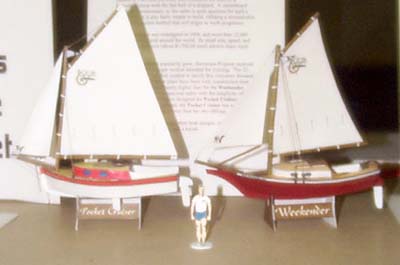
These are 1/32 scale models created by Kevin Green |
:
Stevenson Projects markets plans for do-it-yourself boat builders. Their
most popular "Pocket Yacht" is the Weekender, a 16-foot
gaff rigged sloop. First created for a Popular Science magazine
feature in 1981, this plywood boat combined the lines of a Friendship
sloop with the fast hull of a skipjack. A centerboard was found
unnecessary, so the cabin is quite spacious for such a small craft. It
is also fairly simple to build, utilizing a stressed-skin
"box" construction method that self-aligns as work progresses.
The Weekender was redesigned in 1994, and more than 15,000 plans
have been sold around the world. Its small size, speed, and low
construction cost (about $1,700.00 total) attract many loyal fans.
As the Weekender’s popularity grew, Stevenson Projects received more requests for a larger version intended for cruising. The 22-foot Vacationer was then created to satisfy this consumer demand. While many Vacationer plans have been sold, construction time and expenses are significantly higher than for the Weekender. In order to combine a more spacious cabin with the simplicity of their first boat, Stevenson Projects designed the Pocket Cruiser, a 14-foot catboat. Like all catboats, the Pocket Cruiser has a wide and stable hull, but is slightly slower than her two siblings. Stevenson Projects has many other boat designs, including sailing dinghies, a mini-catamaran, and a kayak. |
|
|
|
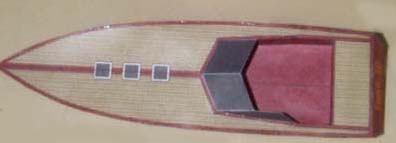 |
Touch-3D is a Computer Aided Design (CAD) software package, used to unfold three-dimensional designs onto two-dimensional surfaces. Thus, it can be used to create paper models on computers. The speedboat is one example of what can be accomplished with Touch 3D. |
|
|
|
| Built in 1915, the V108 was originally ordered by the Netherlands. Instead, the ship was confiscated by the German government and served in the Imperial Navy during WWI. The "V" did not specify a particular class, but identified V108’s manufacturer as Maschinenbau Aktiengesellschaft Vulcan of Stettin-Bredow. After the war, the V108 was handed over to the newly organized Polish Navy and renamed the ORP Kaszub (also spelled "Kashub"). She became a training ship and was placed in reserve before WWII broke out. Sister ship V105 (renamed ORP Mazur) was the first naval casualty of the Second World War.Notes: The complete V108 is a 1:250 scale paper model designed by Roman Detyna, and is available FREE at his Digital Navy website (www.digitalnavy.com) | 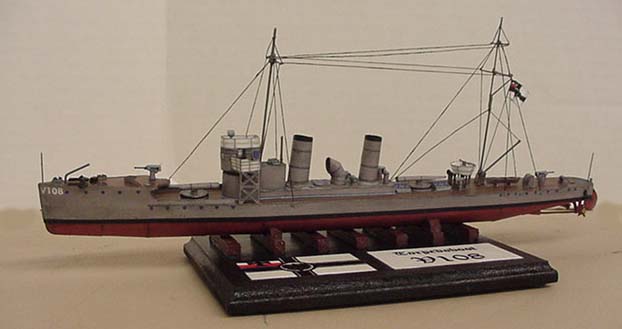
Notes: The complete V108 is a 1:250 scale paper model designed by Roman Detyna, and is available FREE at his Digital Navy website (www.digitalnavy.com) |